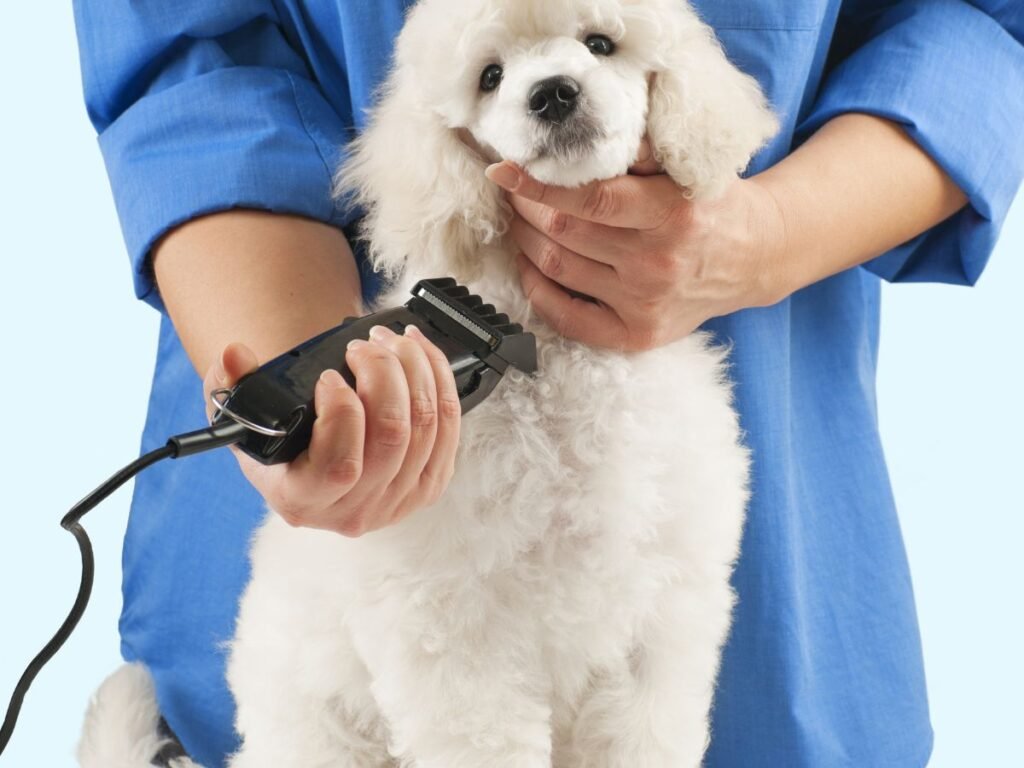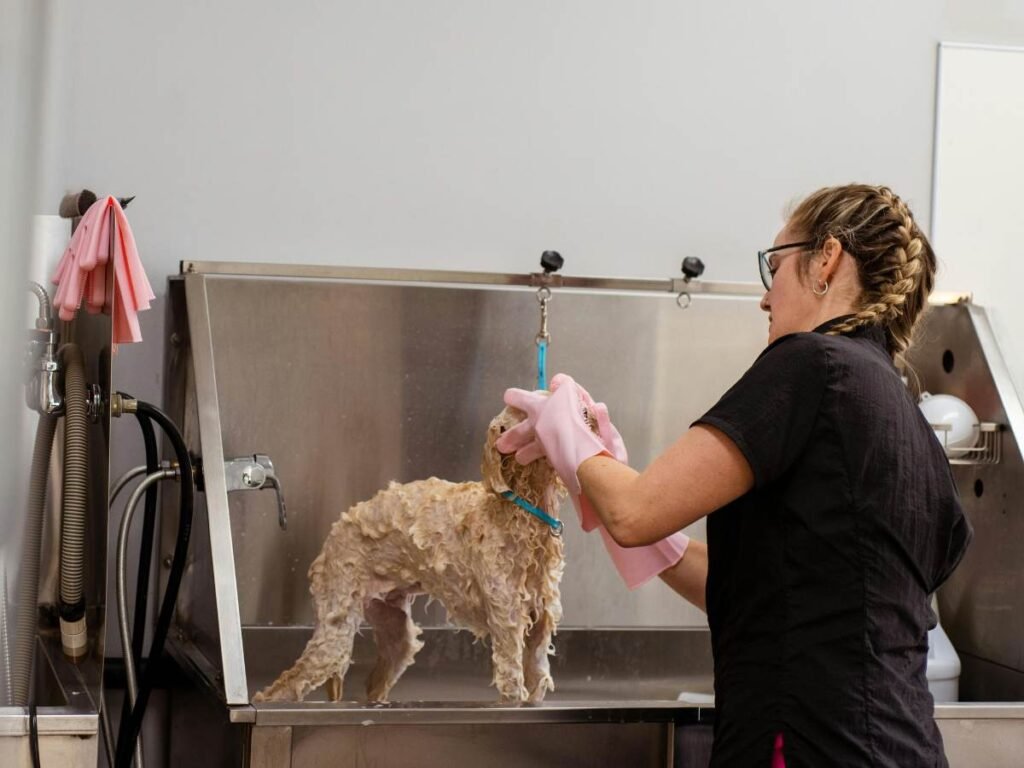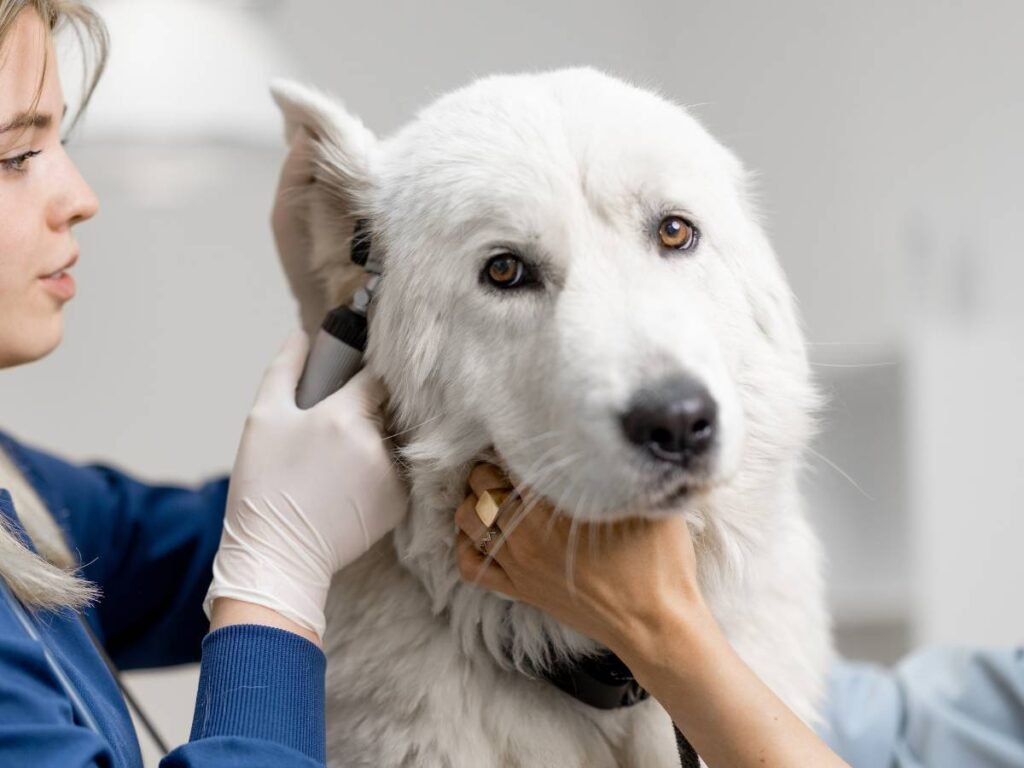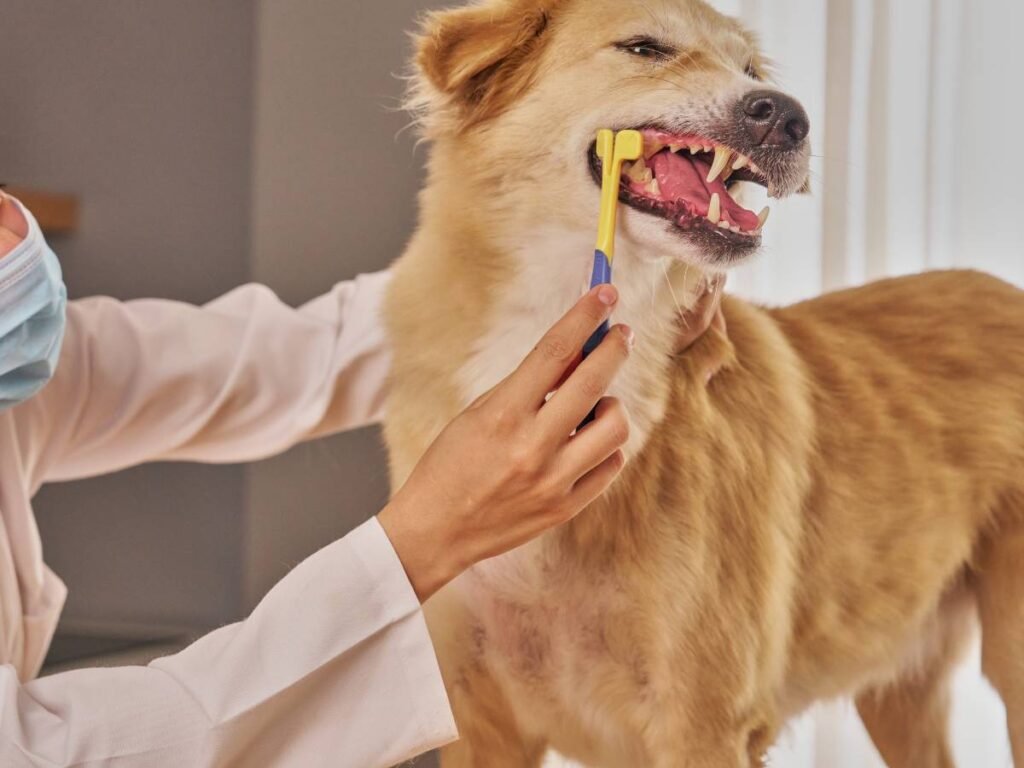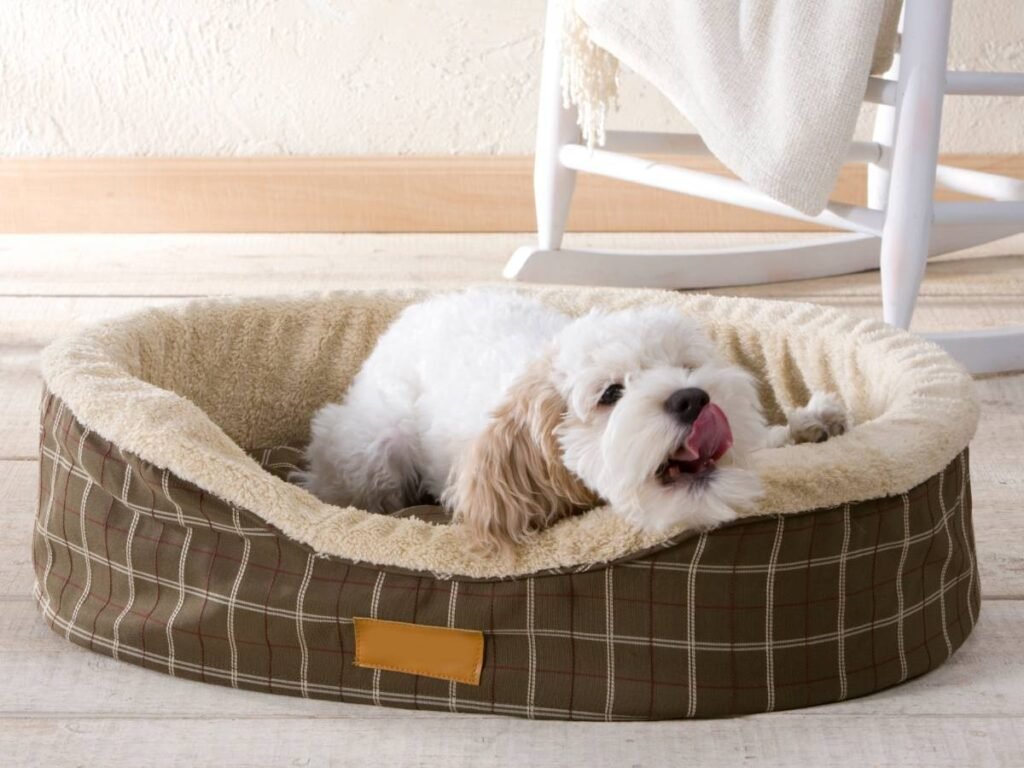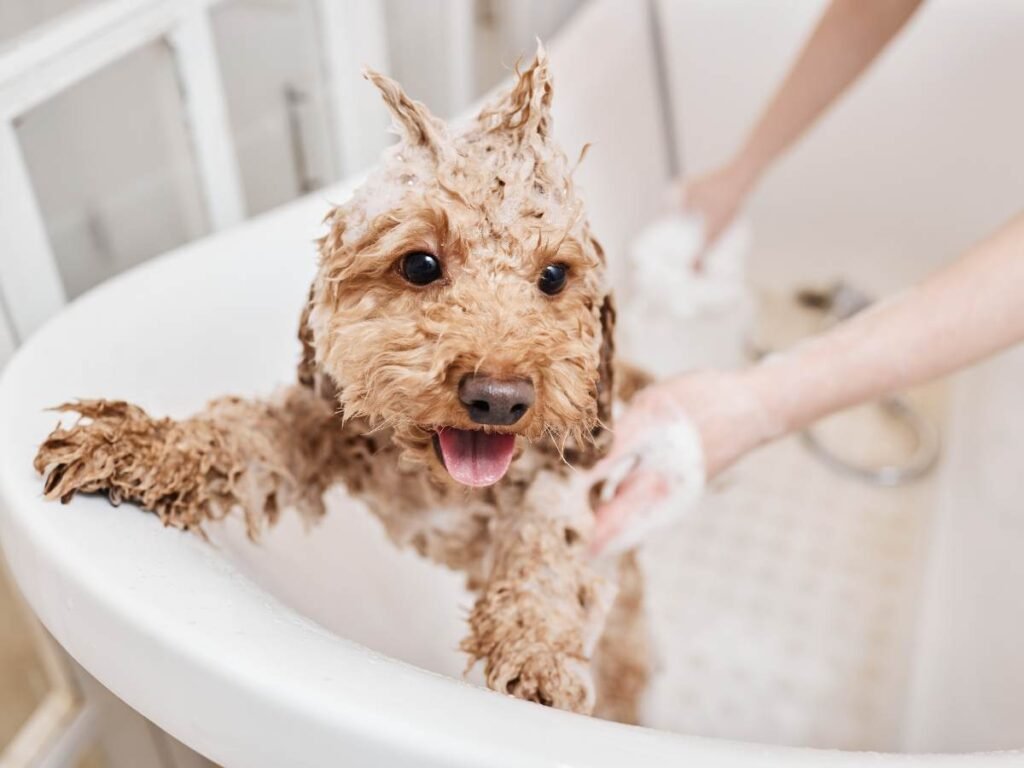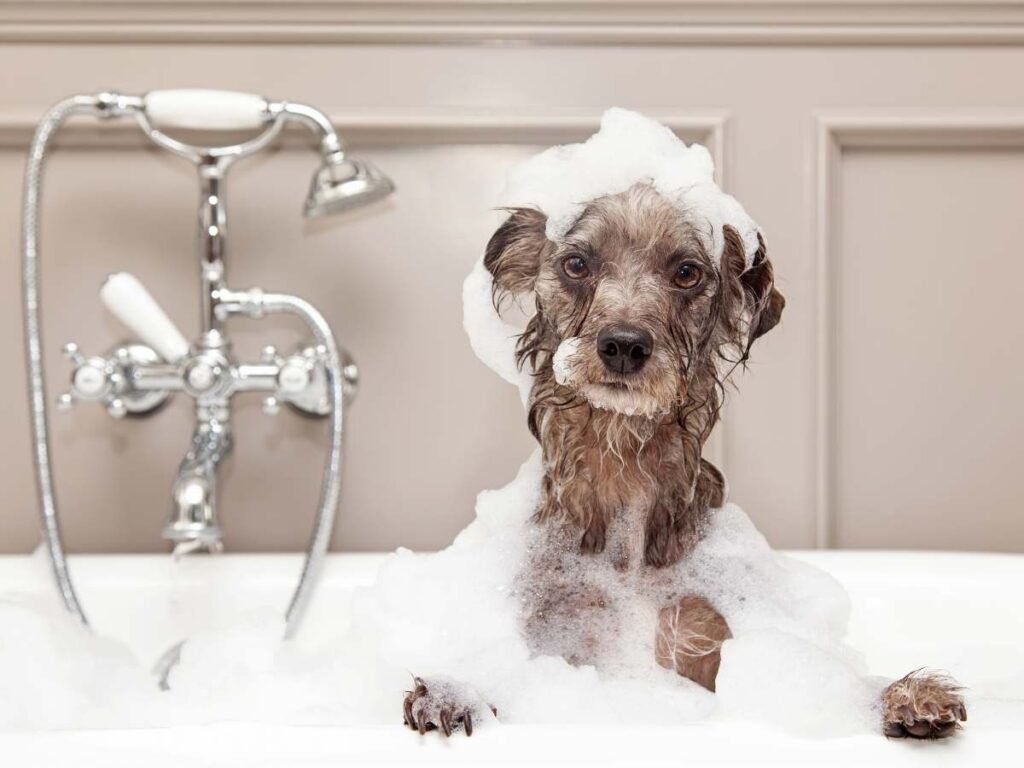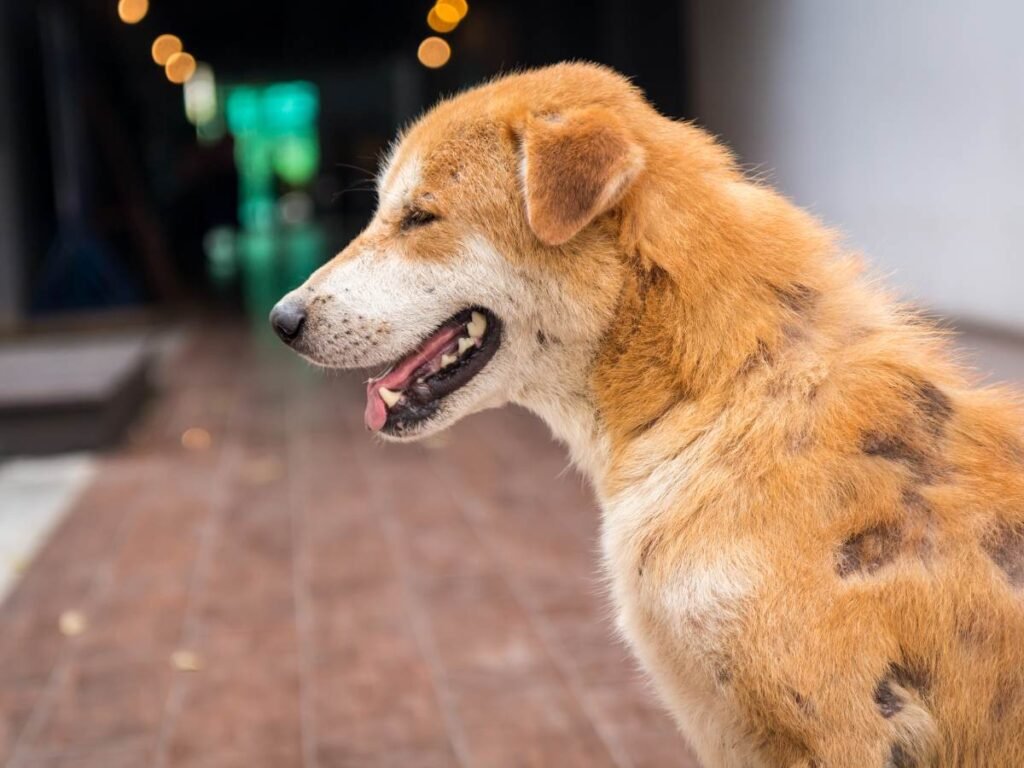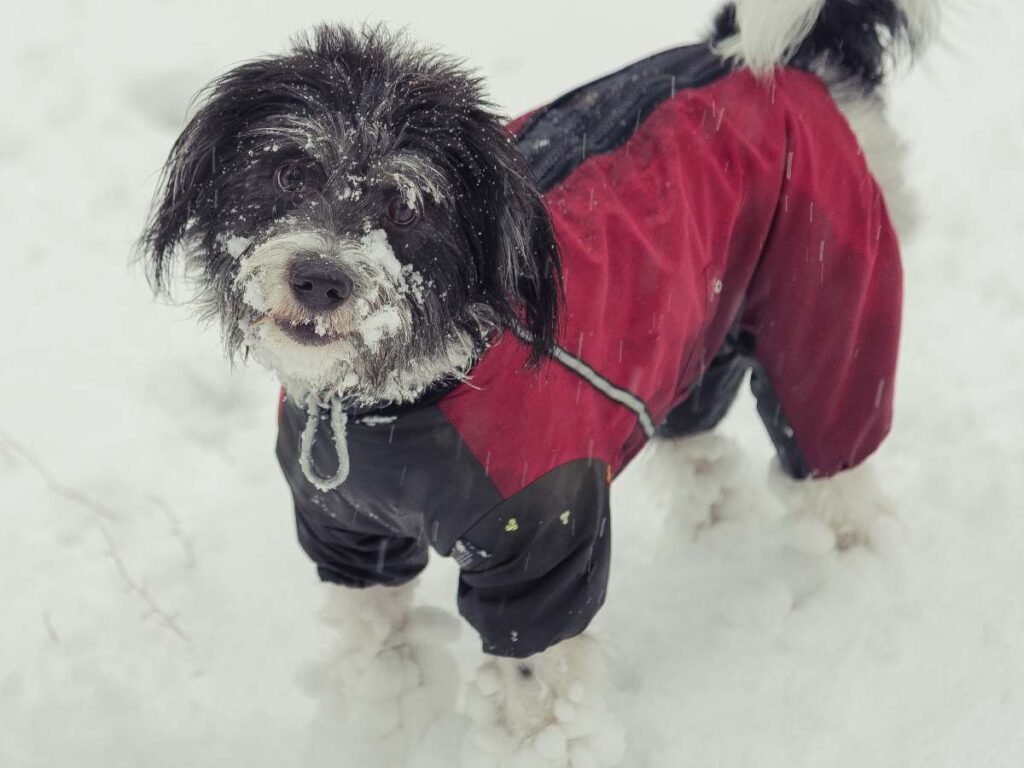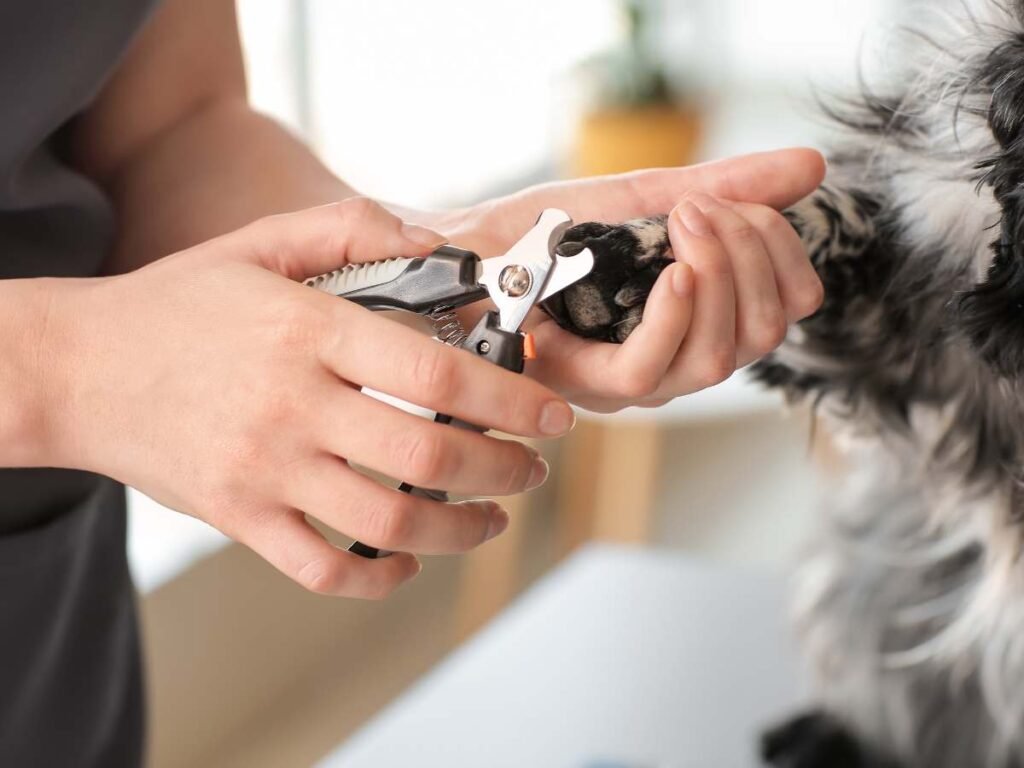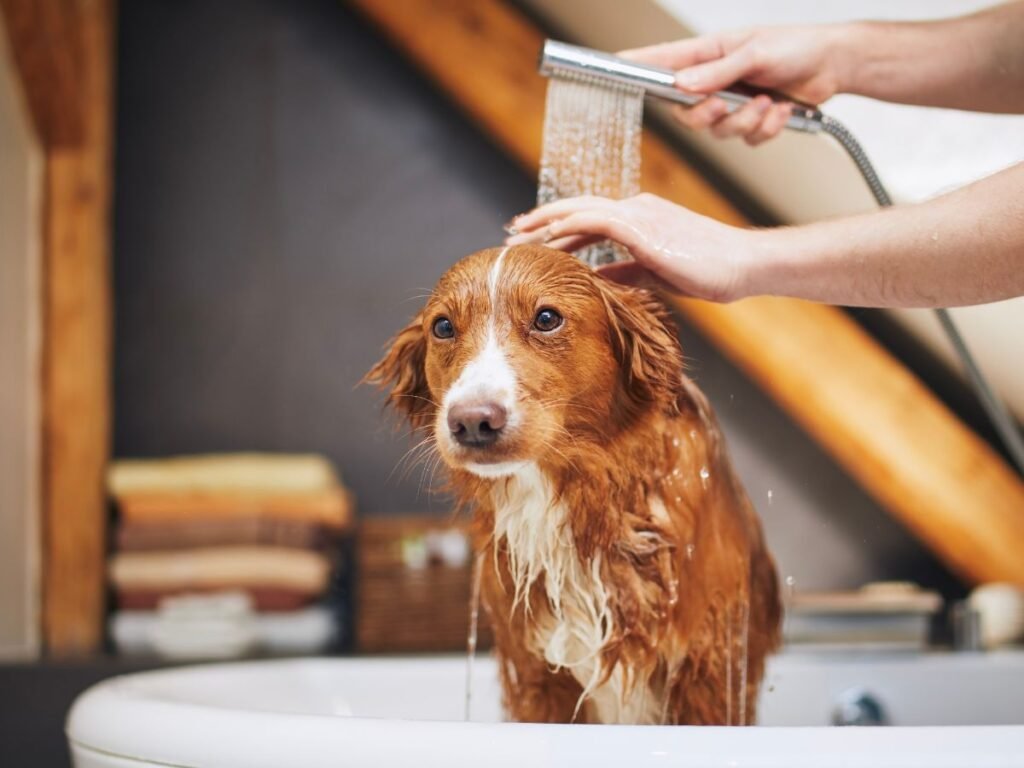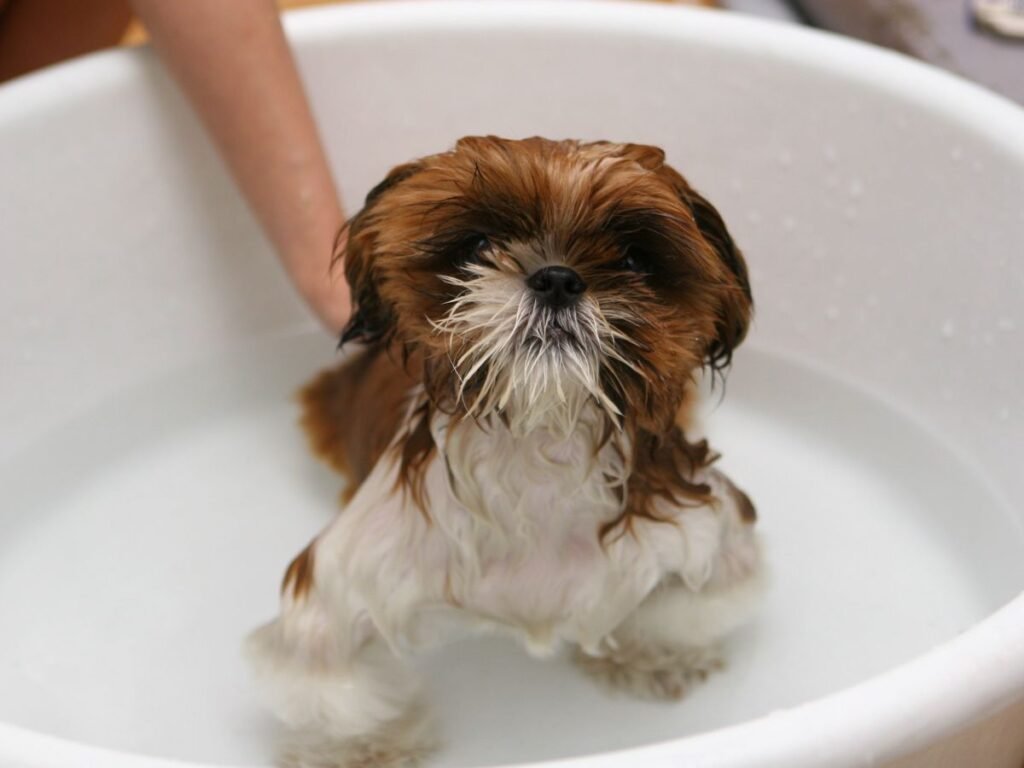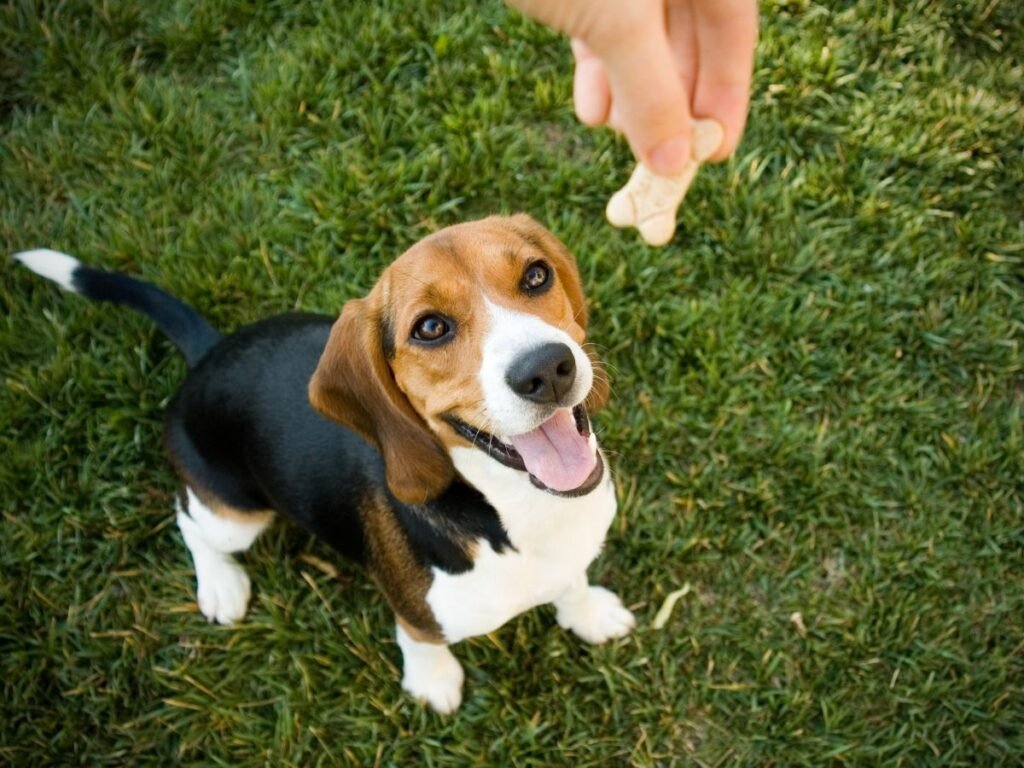Why Your Dog's Hair Gets Matted: How Proper Haircuts Prevent It
If your dog’s coat keeps matting no matter how often you brush, you’re not alone. At Hello Pets Inc., we see this concern almost every day from dog parents across North York. Matting can be painful, it can cause skin issues, and it can make grooming sessions stressful for your dog — but the good news is that most matting is preventable with the right grooming routine and haircut schedule. Let’s walk through why matting happens, what you can do at home, and how professional grooming makes a big difference.
What Is Matting and Why Is It a Problem?
Matting is when your dog’s hair becomes tangled, twisted, and tightly clumped together. Once mats start forming, they grow bigger quickly — trapping dirt, moisture, and even pests close to the skin.
Why matting is harmful:
• It pulls on your dog’s skin, causing discomfort or pain
• It blocks air circulation, leading to hot spots or bacterial infections
• It hides parasites like fleas and ticks
• Severe mats can restrict movement, especially around joints. Severe matting can result in a pelted coat, where the matted hair forms a thick, tight layer over the body that may require shaving for removal.
• Mats around the ears, belly, or hind legs can tear the skin if pulled
This is why groomers take matting so seriously — it’s a health issue, not just a cosmetic one.
Why Does Your Dog’s Hair Matt?
Matting doesn’t happen randomly. Here are the most common reasons we see at our grooming salon in North York.
1. Skipping Regular Brushing
Dogs with long coats, curly coats, or double coats need consistent brushing. When loose hair isn’t removed, it starts intertwining and forming knots.
High-risk breeds include: Poodles, Doodles, Shih Tzus, Bichons, Maltese, Cocker Spaniels, Golden Retrievers, and any dog with a fluffy or curly coat. Common breeds with corded coats or special grooming needs, such as Puli, Komondor, and Bergamasco Shepherd, also require extra attention. Certain dog breeds are more prone to matting and need frequent brushing and good brushing techniques to maintain coat health and prevent mats.
2. Coat Type and Genetics
Some dogs simply matt faster because of their coat texture. Curly coats naturally trap loose hair. Long coats tangle easily. Silky coats knot when exposed to wind or moisture. If your dog is a heavy shedder, that loose undercoat is a major matting culprit.
Maintaining a healthy pup's coat or dog's coat requires attention to more than just the top layer of fur. The coat should be combed regularly, as combing is essential for removing tangles and preventing mats. Brushing only the top layer can push tangles deeper, so thorough combing and detangling are important for overall coat health.
3. Moisture + Friction
Wet fur combined with rubbing causes instant knots. It is important to make sure your dog's coat is completely dry after baths, swimming, or walks in the rain, as dry fur and dry hair are less likely to tangle or form mats. Matting often appears behind the ears, under the collar or harness, on the chest, between the legs, on the tail, and around the armpits. Even a short walk in the rain can cause tangling if the coat isn’t brushed afterward. Loose fur left after getting wet can quickly form mats if not brushed out, trapping dirt and moisture against the skin.
4. Skipping Professional Grooming
A long coat without regular trimming becomes more difficult to maintain. If the coat grows too long between grooms, brushing stops being effective — the tangles turn into mats. This is why most breeds need a grooming appointment every 6–8 weeks. A full groom by a professional covers the entire process of coat maintenance, from bathing to trimming, ensuring your dog's coat stays healthy and comfortable. For mats that cannot be managed at home, it is best to seek professional help. Pet owners should seek professional assistance for severe matting to avoid causing discomfort or injury to their pets.
5. Using the Wrong Tools at Home
Not all brushes work for all coats. Slicker brushes are great for curly coats. Undercoat rakes work best for double-coated breeds. Combs help catch tiny knots you might miss. Using the wrong tool leaves hidden tangles behind. For safe and effective mat removal, always use the right tools, such as grooming clippers or dog clippers, especially for severe mats. When removing mats, hold the mat firmly to avoid pulling on the dog's skin.
How Proper Haircuts Prevent Matting

A professional groomer doesn’t just make your dog look cute — the haircut is designed for coat health and mat prevention. A well-groomed dog is more likely to have a tangle free coat, which helps prevent mats and keeps your pet comfortable.
1. Shorter, Even Length Reduces Tangles
Hair that is too long bends, twists, and traps debris. A well-maintained trim reduces friction, prevents knots around problem areas, and keeps your dog comfortable. Regular trimming also helps prevent tangles, especially in dogs with long fur, making grooming easier and reducing the risk of matting.
2. Groomers Remove Dead Hair Properly
Loose undercoat is the biggest cause of mats. Combing helps remove loose fur and dead hair before it can form mats, preventing build-up that could turn into hard knots. A proper groom removes this build-up safely so it doesn’t turn into hard knots.
3. Sanitary Trim Helps High-Mat Areas
Areas like the belly, armpits, paws, and around the ears are mat hotspots. Groomers shorten the hair here so that movement doesn’t create friction. Trimming these areas also helps prevent mats from pulling on the dog's skin and causing irritation.
4. Post-Bath Brushing Is Done Correctly
Brushing incorrectly when the coat is wet can worsen matting, especially if there is tangled hair present. Professional groomers ensure the coat is completely dry before brushing, as dry hair is easier to manage and helps prevent mats from tightening or worsening. They then brush in layers to ensure no moisture is trapped.
5. Regular Grooming Breaks the Matting Cycle
A grooming routine keeps the coat manageable. Regular grooming also helps prevent future matting by addressing tangles before they become severe. With frequent trims, even dogs prone to matting stay knot-free.
At-Home Tips to Prevent Matting
Pet owners can dramatically reduce matting with simple daily or weekly habits. Here are additional tips for preventing matting at home and maintaining a healthy coat.
1. Brush Regularly — Even for Short-Coated Dogs
• Long or curly coats: daily brushing
• Medium coats: every 2–3 days
• Short coats: weekly
Consistency matters more than the length of the session.
Frequent brushing and good brushing techniques are essential for all coat types to prevent matting, maintain coat health, and ensure your dog's comfort.
2. Brush Before and After Walks
Wind and movement create tiny tangles. Play time can also lead to tangles, so brushing after active play is important. A quick pre-walk and post-walk brush reduces the chance of mats forming.
3. Keep the Coat Dry
After rain, snow, swimming, or baths — dry thoroughly and brush. Never let your dog air-dry if they’re prone to matting.
4. Remove Collars and Harnesses at Home
Continuous rubbing behind the ears and neck causes mats. Removing collars and harnesses at home helps prevent tangles in the neck area. Give your dog’s neck time to breathe when indoors.
5. Stick to a Grooming Schedule
Even if you brush daily, professional maintenance is essential. For most breeds, that means every 6–8 weeks. Regular professional maintenance ensures your dog stays groomed and receives a full groom as needed, supporting coat health and overall well-being.
When Your Dog Already Has Mats: What You Should Do
If the mat is small, you can try a detangling spray, slicker brush, or metal comb. Always focus on safely removing mats by using the right tools, such as clippers or specialized shedding tools, to avoid injuring your dog’s skin. Just as you would carefully brush and maintain your own hair to keep it healthy, using the proper grooming techniques for your dog is essential. But never cut mats out with scissors — this often leads to accidental cuts that may require stitches. If the mat is large, tight, or close to the skin, bring your dog to a professional groomer who can safely dematt or shave the area without hurting your pet.
Why Visiting a Professional Groomer Helps
As a grooming salon in North York, we handle matting cases daily and understand how stressful it can be for both dogs and owners. A professional dog groomer can assess your dog’s coat type, recommend the right haircut length, suggest the right brushing tools, create a grooming schedule tailored to your dog, and remove mats safely without causing pain. If your dog’s matting is severe or you lack the proper tools or experience, it is essential to seek professional help.
Pet owners should seek professional assistance for the entire process of grooming in difficult cases to ensure the procedure is completed efficiently and safely. Regular grooming not only protects the coat but keeps your dog comfortable and healthy.
Final Thoughts
Matting is preventable — but it requires the right combination of at-home care and professional grooming. Your dog doesn’t need to suffer through painful knots, and grooming doesn’t have to be stressful.
A proper haircut, routine brushing, and consistent grooming appointments can keep your dog’s coat soft, healthy, and mat-free. For other tips, consider using detangling sprays or a gentle, mat-preventing shampoo to help maintain coat health. If you ever feel unsure about your dog’s coat condition, you’re always welcome to ask.
At Hello Pets Inc., helping pet parents in North York understand their dogs’ needs is one of the best parts of what we do—pun intended.
